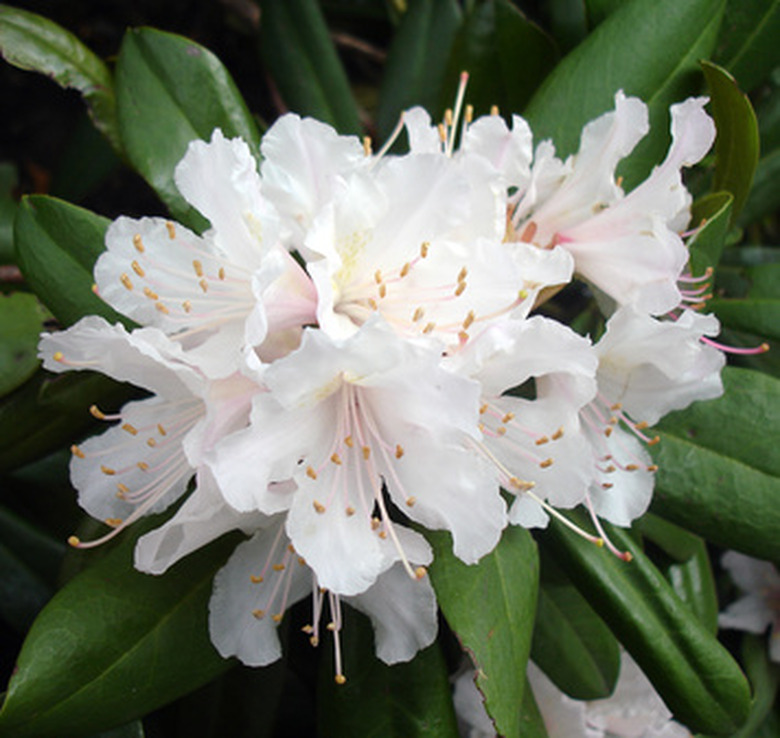How To Compost Oleander
Things Needed
- Pruning shears or lawn mower
- Dried organic matter
- Green organic matter
- Soil or compost
- Spade
Oleander contains highly toxic glycosides, and the branches or leaves left over after oleander shrubs have been dug out or pruned should be disposed of properly. Instead of discarding them in your trash, compost the oleander. This safely dispels the toxins and recycles the oleander waste material into a rich garden amendment that can feed your vegetables, flowers and shrubs.
Step 1
Prepare the oleander vegetation after pruning or removing the shrub. Chop up the branches and leaves into inch-long pieces using pruning shears. Alternatively, spread the oleander in a thin pile on your lawn and run it over with a lawn mower to quickly shred it into tiny pieces.
Step 2
Pour 3 to 4 inches of dried organic matter, like dried leaves or straw, into the bottom of your compost bin. If you don't have a bin, simply pile the leaves in a 3- to 5-square-foot area.
- Oleander contains highly toxic glycosides, and the branches or leaves left over after oleander shrubs have been dug out or pruned should be disposed of properly.
- Instead of discarding them in your trash, compost the oleander.
Step 3
Place the chopped oleander on top of the dried organic matter, along with any other green waste you may have. This includes coffee grounds, lawn clippings, trimmings from your vegetable garden, and thinned seedlings from your flower bed. Make the green layer 5 to 6 inches thick.
Step 4
Spread an inch of soil or old compost on top of the green matter. Repeat the alternate stacking of waste until the compost bin is full or until your compost pile is 4 to 5 feet tall.
Step 5
Mix the compost pile every seven days. The compost is ready for harvesting when it's dark and crumbly. This typically takes four to six months. After just three months, most of the oleander's toxins will have dissipated, according to the University of California.
- Place the chopped oleander on top of the dried organic matter, along with any other green waste you may have.
Tip
Composted oleander is safe to use in any garden area, including your vegetable garden. There's no evidence that vegetable plants will absorb the trace amounts of oleander toxins in the compost and become toxic themselves.
Warning
Don't eat your composted oleander, recommends the University of California. Although most of the oleander toxins will be gone, some may still persist.
References
- "The Complete Compost Gardening Guide"; Barbara Pleasant and Deborah Martin; 2008
- University of California: Environmental Toxicology Newsletter
